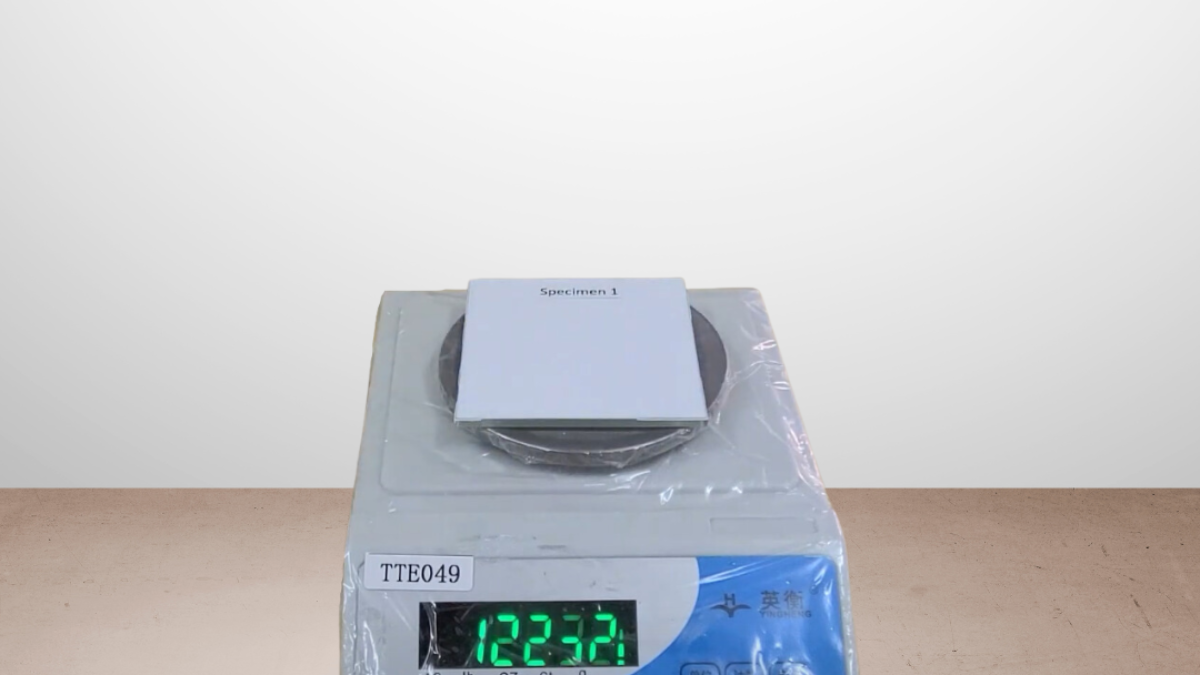Moisture Absorption Testing As Per ASTM D570
Exploring the Impact of Moisture on Plastics: ASTM D570 Moisture Absorption Testing
Introduction
- Plastic materials are widely used across industries, from automotive to consumer electronics and construction. While plastics offer versatility and durability, their performance can be significantly affected by environmental factors such as moisture. To ensure materials perform reliably in humid or wet conditions, it’s crucial to understand how they absorb water. ASTM D570, the standard method for water absorption testing, provides a detailed approach to evaluating how different plastics respond to water exposure.

What is Moisture Absorption Testing?
Moisture absorption testing measures the capacity of a plastic material to absorb water when immersed over a specific period. The resulting data helps engineers and manufacturers understand the material’s resistance to moisture, which can affect its dimensional stability, mechanical properties, and electrical insulation capabilities.
The ASTM D570 test method is widely used for plastic materials that will be exposed to humid or wet environments, ensuring their long-term performance is unaffected by moisture.
ASTM D570: The Test Procedure
The ASTM D570 test involves immersing a plastic specimen in water at a specified temperature, typically 23°C, for a given time. The material’s weight is measured before and after immersion to determine the amount of water absorbed.
The steps in the testing procedure include:
- Preparation of the Test Specimen: The plastic specimen is cut or molded into specific dimensions. Care is taken to ensure that the surface of the specimen is clean and free from impurities that might interfere with the test results.
- Initial Weighing: Before immersion, the specimen is dried and weighed with precision to establish the baseline weight.
- Immersion in Water: The test specimen is submerged in water for a defined time, usually 24 hours. Depending on the test requirements, some tests may extend for longer periods.
- Post-Immersion Weighing: After the immersion time has passed, the specimen is removed from the water, wiped quickly to remove any surface water, and weighed again.
- Calculation of Water Absorption: The difference between the initial weight and the post-immersion weight is used to calculate the percentage of water absorption. This value gives insight into the material’s moisture uptake under specific conditions.
Factors Affecting Water Absorption in Plastics
Several factors influence the rate and extent of water absorption in plastics:
Material Composition: The type of polymer plays a critical role in water absorption. For instance, hydrophilic polymers like polyamides (nylon) absorb more water compared to hydrophobic polymers like polypropylene and polyethylene.
Environmental Exposure: Prolonged exposure to water or humid conditions can increase water absorption, especially for semi-crystalline polymers.
Specimen Thickness: Thicker specimens absorb water more slowly because it takes time for moisture to penetrate deep into the material. The test specimen’s thickness must be consistent to ensure accurate results.
Temperature: Higher temperatures typically accelerate the water absorption process, which is why ASTM D570 specifies controlled conditions to maintain test consistency.
Why Moisture Absorption Testing Matters
Moisture absorption testing is crucial for evaluating plastic performance, particularly in industries where materials are exposed to environmental conditions that may cause moisture penetration. Here’s why understanding water absorption is critical:
- Dimensional Stability: Materials that absorb water may swell or distort, leading to changes in shape and size that could impact functionality or fit. For applications where tight tolerances are critical, such as in precision engineering or electronics, dimensional changes could cause malfunction or failure.
- Mechanical Properties: Moisture can weaken the mechanical strength of plastic materials, affecting properties like tensile strength, impact resistance, and flexural strength. Over time, water exposure can lead to reduced durability and a shorter service life for plastic components.
- Electrical Insulation: For plastics used in electrical insulation, water absorption can increase conductivity, leading to short circuits, insulation breakdown, or even fire hazards. Moisture absorption testing is vital for ensuring that insulating materials maintain their protective properties.
- Long-Term Durability: In industries like automotive and construction, materials are often exposed to outdoor environments where moisture is a constant presence. Testing for moisture absorption ensures that plastics will withstand these conditions without deteriorating over time.
Real-World Applications
Automotive Components: Plastics used in car interiors, engine covers, and under-hood components must be resistant to moisture to maintain performance over time. ASTM D570 testing helps manufacturers choose materials that won’t warp or degrade under varying environmental conditions.
Electrical Devices: In consumer electronics and electrical applications, insulation materials must resist moisture to prevent potential short circuits or failure of electrical systems.
Construction Materials: Many building components, from piping to insulation, rely on moisture-resistant plastics. ASTM D570 ensures that these materials can withstand long-term exposure to humidity, rain, or water without compromising structural integrity.

Conclusion
- Moisture absorption testing as per ASTM D570 is a critical step in evaluating plastic materials for applications where water exposure is a factor. Whether you are developing components for the automotive industry, designing electrical insulation systems, or choosing materials for construction, understanding how plastics react to moisture is essential for ensuring long-term reliability and performance.

